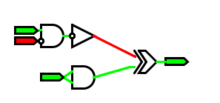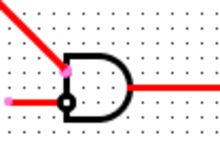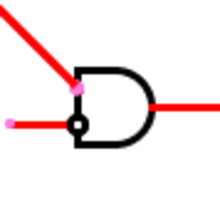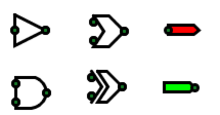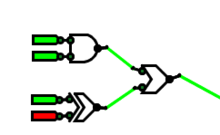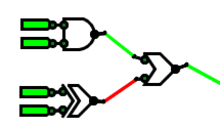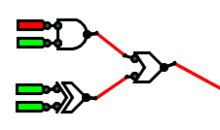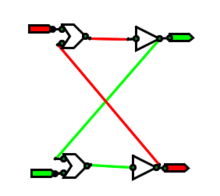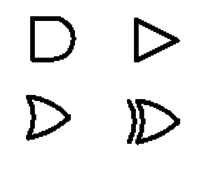Gamma Logic Gate Simulation
By Ben Nitkin on
Wait a minute. Is gamma not a thing? You have alphas, then betas. So my first proper release will be named gamma. Deal with it.
Anyhow, I've cleaned up the simulator a lot since last time. There are a ton of new checks, and some new features, too. Inputs, for instance, will remain associated with Outputs even if a second output is dragged through the binding area.
As far as new features, the simulator now includes grid spacing (Gates jump to line up with each other, so you get pretty right angles). By default, Gates are 30 pixels across. Setting their inputs to be 1/4 of that height apart from each other allows for a grid spacing of 7.5 pixels. There are a few modes: by default, a grid's drawn, and grid spacing is enforced. The grid and spacing can both be disabled, though, for a cleaner mode (no grid drawn) and a freeform one (no spacing enforced).
